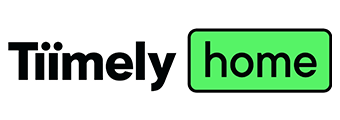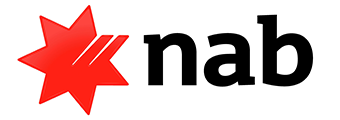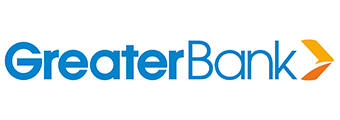Discussion around fixed home loan rates tends to focus on the big question: to fix or not to fix. Once you make the decision to fix though, you'll then need to decide how long a fixed term you're after.
There are a couple of exceptions like ANZ, where customers may be able to fix for up to ten years, but generally speaking, fixed-rate terms in Australia are for between one and five years. In this article, we'll focus on shorter fixed terms (three years or less).
How long should you fix your home loan for?
There are a few different variables involved with choosing the ideal fixed-rate term length. For many borrowers, it will depend why you're fixing your rate in the first place.
These are among the most important considerations:
Future of interest rates
One of the most obvious reasons to fix your home loan rate is because you're anticipating variable rates to increase. Fixing can inoculate you from seeing your mortgage repayments fly up if/when the RBA increase the official cash rate. If you think you've got a good idea how interest rates may change over the next couple of years, it might be smart to also factor this in to choosing your fixed term. For example, you might expect rates will be consistent for an extended period, say eighteen months, before they start falling. In this case, a low-rate loan fixed for one year might make more sense than fixing for longer and potentially missing out if variable rates start to come down before your fixed term expires.
Financial goals
Beyond the gamble on interest rates, some borrowers are also attracted to fixed rates because of the stability consistent repayments can provide. A longer-term fixed rate can allow you to reliably plan your finances further into the future, which could be particularly useful if you have another long term saving goal like a holiday, a wedding or buying another property.
Future plans
Your plans for the next few years should also factor into your considerations when choosing how long to fix. One of the major drawbacks to fixed-rate home loans are the extra break costs you'll need to pay if you discharge early. Break costs on fixed-rate loans can often amount to thousands of dollars, depending on the remaining time on the fixed-rate term (the more time remaining, the higher the break costs).
This can be a major drawback to fixed-rate loans. Longer fixed terms are often better suited to borrowers who are reasonably certain about how the next few years will play out. Say you've got young children and are mortgaging a family home you intend to live in until they are all out of school, you might be pretty confident you won't decide to refinance to an investment home loan in the next couple of years. In that case, a longer-term fixed rate might make sense.
Meanwhile borrowers expecting to sell their home or refinance in the near future might wish to avoid longer fixed-rate terms to prevent incurring large break costs.
Short-term fixed home loan rates
Interest rates on loans are usually priced based on a lender's cost of funding. This means that there might be slightly different rates for different fixed-rate term lengths at the same lender depending on economic circumstances.
For example, at the time of writing (October 2024), the RBA is generally expected to start cutting rates in 2025, and gradually bring rates down over the following couple of years. Accordingly, Australia's largest lenders are currently charging higher rates on one-year fixed-rate terms than for longer.
In general, short-term fixed rates (three years or less) tend to have slightly lower rates than longer terms. Lenders tend to price in the risk that comes with the extra uncertainty of offering fixed rates for longer.
1 Year Fixed-rate Home Loans
Below is a selection of sharp deals on one-year fixed-rate home loans for owner occupiers and investors.
Lender Home Loan Interest Rate Comparison Rate* Monthly Repayment Repayment type Rate Type Offset Redraw Ongoing Fees Upfront Fees Max LVR Lump Sum Repayment Additional Repayments Split Loan Option Tags Row Tags Features Link Compare Promoted Product Disclosure
2 Year Fixed-rate Home Loans
Below is a selection of sharp deals on two-year fixed-rate home loans for owner occupiers and investors.
Lender Home Loan Interest Rate Comparison Rate* Monthly Repayment Repayment type Rate Type Offset Redraw Ongoing Fees Upfront Fees Max LVR Lump Sum Repayment Additional Repayments Split Loan Option Tags Row Tags Features Link Compare Promoted Product Disclosure
3 Year Fixed-rate Home Loans
Below is a selection of sharp deals on three-year fixed-rate home loans for owner occupiers and investors.
| Lender | Home Loan | Interest Rate | Comparison Rate* | Monthly Repayment | Repayment type | Rate Type | Offset | Redraw | Ongoing Fees | Upfront Fees | Max LVR | Lump Sum Repayment | Additional Repayments | Split Loan Option | Tags | Row Tags | Features | Link | Compare | Promoted Product | Disclosure |
|---|---|---|---|---|---|---|---|---|---|---|---|---|---|---|---|---|---|---|---|---|---|
5.69% p.a. | 5.95% p.a. | $2,899 | Principal & Interest | Fixed | $0 | $530 | 90% |
| Promoted | Disclosure | |||||||||||
5.59% p.a. | 6.57% p.a. | $2,867 | Principal & Interest | Fixed | $8 | $350 | 70% | ||||||||||||||
5.94% p.a. | 5.84% p.a. | $2,978 | Principal & Interest | Fixed | $0 | $0 | 80% | ||||||||||||||
6.14% p.a. | 8.35% p.a. | $3,043 | Principal & Interest | Fixed | $8 | $600 | 95% | ||||||||||||||
6.39% p.a. | 7.38% p.a. | $3,124 | Principal & Interest | Fixed | $null | $160 | 95% |
First published on September 2021
Photo by Khachik Simonian on Unsplash

Ready, Set, Buy!
Learn everything you need to know about buying property – from choosing the right property and home loan, to the purchasing process, tips to save money and more!
With bonus Q&A sheet and Crossword!













 Denise Raward
Denise Raward

 Harrison Astbury
Harrison Astbury

 Emma Duffy
Emma Duffy

